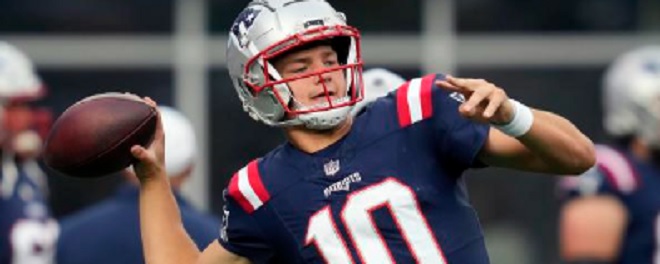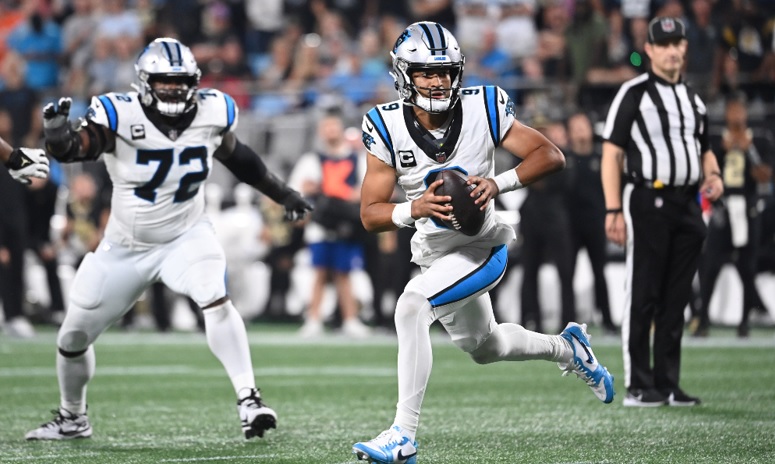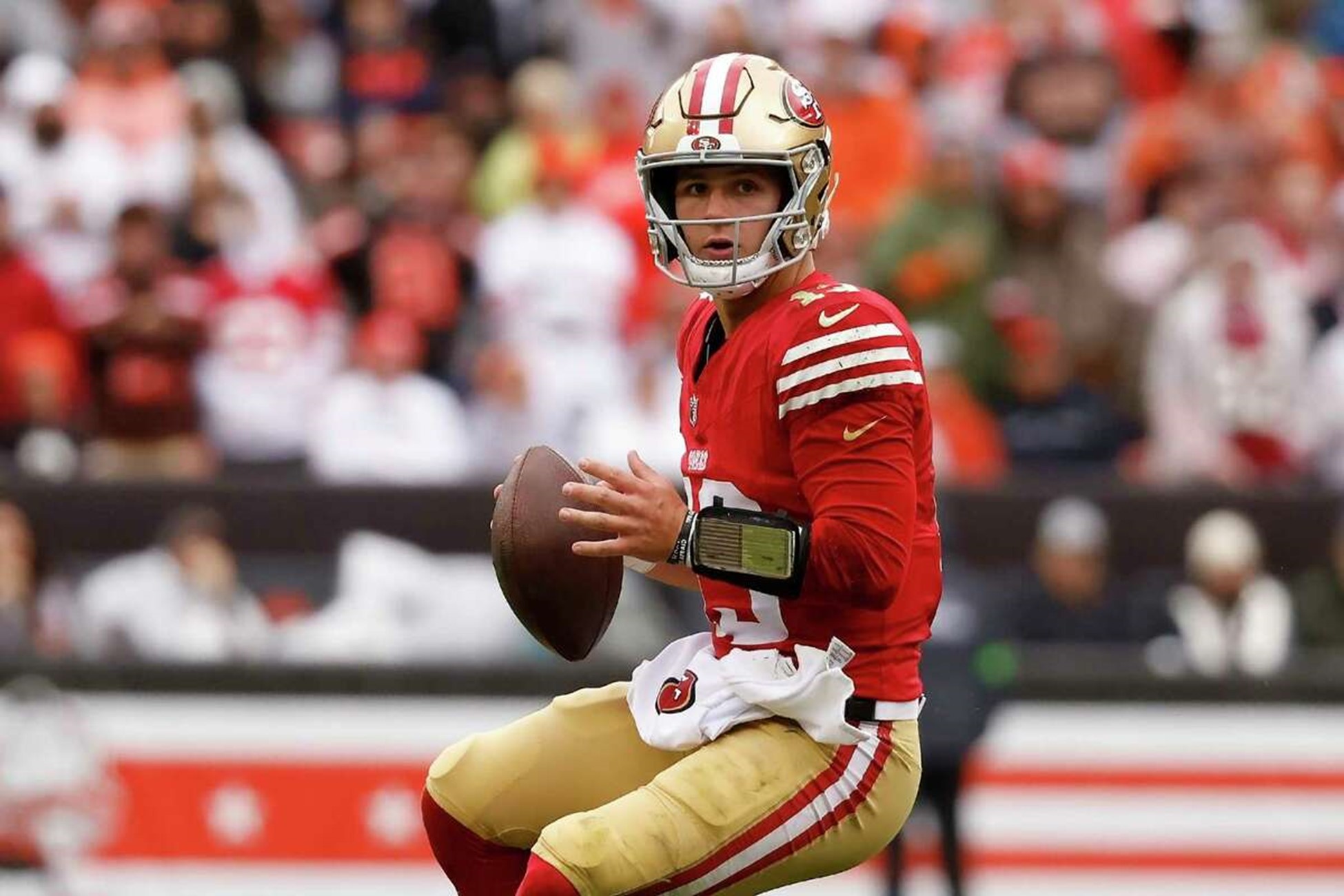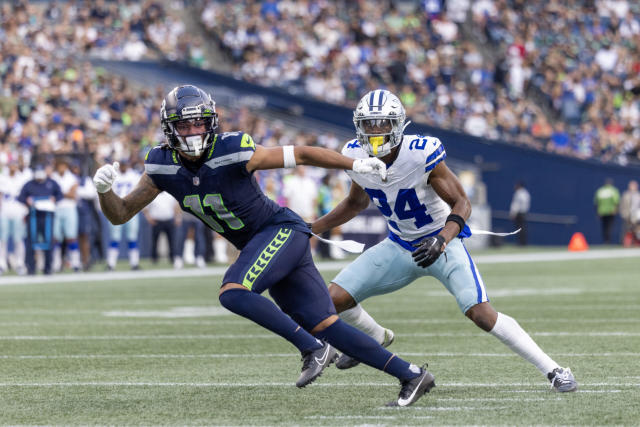 Baltimore Ravens (Last Year: 10-6)
Baltimore Ravens (Last Year: 10-6)
2019 NFL Season Preview:
Veteran Additions:
RB Mark Ingram, DE/OLB Shane Ray, DE/OLB Pernell McPhee, CB/ST Justin Bethel, S Earl Thomas.
Early Draft Picks:
WR Marquise Brown, DE Jaylon Ferguson, WR Miles Boykin, RB Justice Hill, G Ben Powers, CB/S Iman Marshall. Ravens Rookie Forecast
Offseason Losses:
QB Joe Flacco, WR John Brown, WR Michael Crabtree, DE/DT Brent Urban, DE/OLB Za’Darius Smith, DE/OLB Terrell Suggs, ILB C.J. Mosley, S Eric Weddle.
2019 Baltimore Ravens Offense:
Many thought Lamar Jackson was the greatest thing since sliced bread when he led the Ravens to the playoffs in his rookie year. He was so dynamic as a runner, and he even had some nice passing performances, including his victory over the Chargers. Jackson almost looked unstoppable, and then, a good team got a second look at him. The Chargers wrecked Jackson in their playoff battle, limiting him to 14-of-29 passing for 194 yards and four turnovers. Jackson was so bad that Baltimore fans were chanting for Joe Flacco to replace him.
Flacco is gone, so the job is Jackson’s. The 2018 first-round pick will need to develop as a passer if he wants to avoid a meltdown like he had in last year’s playoff game. Teams will catch on to Jackson and will make the appropriate defensive adjustments, much like the Chargers did. The problem is that Jackson tested poorly on the Wonderlic, so it remains to be seen if he has the capacity to improve the mental aspect of his game. Jackson’s throwing ability is also questionable, as his passes have been wobbly during OTAs.
Making matters worse, Jackson doesn’t have the best supporting cast. He lost his top two receivers this offseason, Michael Crabtree and John Brown, and yet the team didn’t make any replacements in free agency. The Ravens will need to rely on some rookies to act as their top wideouts, which is not ideal. There is talent at the position, however, as the Ravens traded up in the first round for Marquise Brown. The Oklahoma product has injury concerns – he may have to begin the year on the PUP list – but he has the ability to go the distance whenever he gets his hands on the ball. Brown figures to start right away – when he gets healthy, that is – and he’ll play with Willie Snead, a capable veteran, as well as third-round rookie Miles Boykin out of Notre Dame. Boykin has a massive frame (6-4, 220), so he could take Crabtree’s place as a top end-zone target.
Given that the Ravens have either inexperienced, injured or mediocre options at receiver, the Ravens will need the other areas of their offense to step up. Baltimore used two early selections in the 2018 NFL Draft on tight ends, Hayden Hurst and Mark Andrews. It seems as though Jackson prefers throwing to Andrews, but that could change after a full offseason of working together with Hurst.
Meanwhile, Baltimore should continue to boast one of the best ground attacks in the NFL. The Ravens are very difficult for most defenses to stop on the ground, thanks to Jackson’s scrambling ability. As great as Baltimore was at running the ball last year, the team didn’t have a dynamic threat in the backfield along with Jackson. That will change in 2019, as Mark Ingram will be a huge upgrade over the previous running backs. Ingram should have a huge season, while rookie runner Justice Hill figures to be a potent receiver out of the backfield.
The Ravens will trample opponents that can’t stop the run, but they’ll need Jackson to come through against better defenses. It would help if Baltimore could protect him adequately. The Ravens have a mixed group of linemen, as left tackle Ronnie Stanley and guard Marshal Yanda are terrific blockers. Conversely, center Matt Skura and guard Alex Lewis are horrible. Right tackle Orlando Brown was average last year, but he’s a young player who could improve.
2019 Baltimore Ravens Defense:
The Ravens said farewell to Ray Lewis and Ed Reed several years ago. Now, they lost the third long-time member of their once-prolific defense, as Terrell Suggs has moved on as well.
Suggs will be difficult to replace, especially considering that Baltimore also lost another edge rusher, Za’Darius Smith, a dynamic, young player with tons of upside. With Suggs and Smith gone, it’s unclear how Baltimore will be able to put plenty of pressure on opposing quarterbacks. The Ravens were sixth in pass-rushing efficiency last year, but as their current roster stands, they may not be in the top 20 in that regard next year. Young players like Matthew Judon (7 sacks in 2018), Tyus Bowser, Tim Williams and Shane Ray will have to step up. There’s also Jaylon Ferguson, who was chosen in the third round this past April.
A diminished pass rush will certainly put Baltimore’s secondary to the test. The team’s cornerbacks have played very well in recent years, but it’ll soon be clear if that was a byproduct of the team’s ability to put heavy heat on opposing quarterbacks. The Ravens appear to have a tremendous trio of cornerbacks in Marlon Humphrey, Jimmy Smith and Brandon Carr, particularly the former, whose ceiling is very high as a recent first-round pick. Smith, on the other hand, hasn’t played more than 12 games since 2015. Turning 31 at the end of July, Smith is bound for regression, even when considering the downgraded pass rush.
The Ravens also have a talented, but injury-prone defensive back at safety. That would be Earl Thomas, who hasn’t played a full season since 2015. The former Seahawk should still be a great player when healthy, but he was on the field for just four games in 2018. He’ll need to be more available this upcoming season for him to properly replace Eric Weddle. Thomas will start next to Tony Jefferson, another talented, young defensive back.
Baltimore will be worse versus the pass, but what about the run? The Ravens will certainly miss linebacker C.J. Mosley in that regard. Mosley had some issues in coverage, but he was very forceful in run support. His absence will adversely impact Baltimore’s ability to stop the rush. Patrick Onwuasor and Kenny Young will need to step up to replace Mosley.
That said, the Ravens won’t be inept when it comes to stopping ground attacks. They still have some skilled defensive linemen, including Michael Pierce, Brandon Williams and Chris Wormley, all of whom specialize at clogging running lanes. Pierce is especially stellar in this regard.
2019 Baltimore Ravens Schedule and Intangibles:
John Harbaugh has done a terrific job of maintaining a dominant home-field advantage during his tenure as Baltimore’s head coach. The Ravens are an outstanding 67-24 as hosts since 2008.
Harbaugh used to be a special-teams coach, so it’s not surprising that the Ravens have outgained the opposition on punt and kickoff returns most years.
Justin Tucker is arguably the top kicker in the NFL. He whiffed on just eight of his 115 attempts in the past three years, drilling a remarkable 20-of-24 tries from 50-plus in that span. Tucker has missed just one extra point in his career.
Sam Koch was No. 1 in net-punting average in 2014, and he almost got there in 2015, ranking second. He dropped to 18th in 2016, and he fell even further in 2017, sliding down to 21st. However, he improved to 16th last year. He does a great job of pinning the opposition inside the 20.
Baltimore has an easy start to its schedule, battling the Dolphins and Cardinals right away. However, things will get much more difficult after that, as the Ravens have to take on the Chiefs, Browns, Steelers, Seahawks and Patriots in five of their next six games.
2019 Baltimore Ravens Rookies:
Go here for the Ravens Rookie Forecast, a page with predictions like which rookie will bust and which rookie will become a solid starter.
2019 Baltimore Ravens Positional Rankings (1-5 stars):
Quarterbacks |
  |
Offensive Line |
 
|
Secondary |
    |
Running Backs |
    |
Defensive Line |
    |
Special Teams |
     |
Receivers |
  |
Linebackers |
  |
Coaching |
    |
2019 Baltimore Ravens Analysis: The Ravens were able to win the division in 2018, but that’s unlikely to happen this upcoming season. The defense has gotten worse, as has the receiving corps. Meanwhile, Lamar Jackson will need to take a major leap in his sophomore campaign, given that defenses will be able to solve him with the appropriate film. Given his lacking support at wideout, as well as how mediocre the offensive line is, Jackson seems likely to endure a sophomore slump.
Projection: 5-11 (3rd in AFC North)
2018 Projection: 6-10. 2018 Actual Result: 10-6.
2017 Projection: 7-9. 2017 Actual Result: 9-7.
2016 Projection: 9-7. 2016 Actual Result: 8-8.
NFL Draft Team Grade: A Grade
Goals Entering the 2019 NFL Draft: It’s all about building around Lamar Jackson. The electrifying quarterback has all the talent in the world, but isn’t surrounded by much. Offensive line help, improved receivers and another running back to complement Mark Ingram are all necessities. Meanwhile, the defense lost some key players like Terrell Suggs, C.J. Mosley and Za’Darius Smith, who will need to be replaced.
2019 NFL Draft Accomplishments: The Ravens apparently agreed that their primary objective needed to be building around Lamar Jackson. Four of their initial five selections were used on offensive players to complement the young quarterback.
It all began when the Ravens traded down three spots and then obtained wide receiver Marquise Brown, an explosive player who can go the distance any time he touches the ball. Miles Boykin, chosen in the third round, will complement Brown in the receiving corps as a tall presence in the end zone. Running back Justice Hill is a nice back to pair with Mark Ingram, as he adds explosion and receiving ability to Ingram’s tough running. Guard Ben Powers might end up starting early in his career. All of these picks, aside from Powers, were graded as an A+ or an “A.”
Additionally, the Ravens bolstered their defense with a steal in the third round, picking edge rusher Jaylon Ferguson. I didn’t like some of Baltimore’s late-round decisions, particularly Trace McSorley, but the Ravens put together a terrific haul in their first attempt to build around Jackson.
NFL Draft Individual Grades:
25. Marquise Brown, WR, Oklahoma A Grade
The Ravens had a huge hole at receiver, so they had to find an explosive play-maker at the position. That’s exactly what they did, and yet they also traded down in the process. While some teams made major reaches in this draft – and some even moved up for those reaches! – the Ravens were patient, moving down in the process to select the player they wanted to help their offense be more explosive. Well done, Baltimore.
85. Jaylon Ferguson, DE, Louisiana Tech A Grade
Jaylon Ferguson, based on his tape alone, would’ve been a first-round pick. We had him in the opening frame for a bit, but Ferguson dropped for two reasons: First, he has some minor character concerns; he had a misdemeanor battery charge. Second, Ferguson tested extremely poorly at the combine. Still, Ferguson is a good player and is worth the risk here, as the Ravens needed to find an edge rusher to replace Terrell Suggs and Za’Darius Smith.
93. Miles Boykin, WR, Georgia A Grade
Miles Boykin is very big (6-4, 220) and extremely athletic. He was one of the top testers at the combine at his position. Boykin would’ve gone much higher than this had he been more productive at Notre Dame. He was just a 1-year starter, but he did very well in that one season. This is the time to take a player with immense upside like this, especially at a position of need. I like this pick a good deal.
113. Justice Hill, RB, Oklahoma State A+ Grade
We’re back to more great picks! Justice Hill is someone I had pegged at the end of the second round or beginning of the third frame. He’s an explosive running back who can go the distance whenever he touches the ball. I don’t think he can handle a full workload, but that’s not required of running backs nowadays. He’ll likely emerge as an excellent play-maker in Baltimore’s new offense.
123. Ben Powers, G, Oklahoma C Grade
Ben Powers is a late-round prospect, who is a bit of a reach here. Powers offers no athleticism or upside at all, but he’s strong and could eventually develop into a starter. He’ll likely be a backup, however.
127. Iman Marshall, CB/S, USC C- Grade
This is a bit of a reach, as I considered Iman Marshall to be a late-round prospect. He played cornerback at USC, but may have to move to safety in the NFL. He just doesn’t have the speed to stay at cornerback. Baltimore could’ve waited on Marshall.
160. Daylon Mack, DT, Texas A&M B- Grade
Daylon Mack was highly recruited out of high school, but barely did anything at Texas A&M prior to 2018. Mack admitted that he struggled with depression, but turned his life around this past season. He clogged running lanes very well, and that should continue in the NFL if Mack remains mentally upbeat. There’s concern with Mack’s lack of positive experience, but the upside is there.
197. Trace McSorley, QB, Penn State C Grade
I’m a Penn State alumnus, and I’m happy to see Trace McSorley get drafted, but I don’t see him sticking in the pros. He’s just way too limited as a passer. I like the point that one analyst made about being able to use McSorley in the same offense as Lamar Jackson, but I don’t think he’ll make the 53-man roster unless Robert Griffin gets hurt.
Follow @walterfootball for updates.
Season Summary:
The Ravens were hot down the stretch after making the change to Lamar Jackson, but they were able to beat numerous bad teams to reach the postseason. They predictably faltered in the playoffs. The future seems bright, but Jackson will need to improve as a passer so that he’s not the next Robert Griffin or Vince Young.
Offseason Moves:
Team Needs:
- Guard: The Ravens need to give Lamar Jackson some support. Jackson was constantly under siege against the Chargers. The primary liability up front is at one of the guard spots.
- Running Back: Gus Edwards was solid down the stretch, but the Ravens can do better as far as their running game is concerned. A better running back would also provide a big boost for Jackson. Signed Mark Ingram
- Wide Receiver: John Brown is an impending free agent, so Baltimore will need a new speed threat if he departs.
- Inside Linebacker: C.J. Mosley is hitting free agency this March. He struggled in coverage this past season, so Baltimore may want a new linebacker to pair with Patrick Onwuasor.
- Safety: Eric Weddle was released, so he’ll need to be replaced. Signed Earl Thomas
- Backup Quarterback: If Joe Flacco leaves, as expected, the Ravens will need a new backup quarterback with Robert Griffin being an impending free agent. Re-signed Robert Griffin
Follow me @walterfootball for updates.
2019 NFL Free Agent Signings:
-
 Earl Thomas, S, Seahawks. Age: 30.
Earl Thomas, S, Seahawks. Age: 30. 




Signed with Ravens (4 years, $55 million)
Earl Thomas would’ve been a five-star free agent a year ago, but he turns 30 in May. Still, Thomas should still be one of the top safeties in the NFL for the next three or so years. Thomas is coming off a season-ending leg injury, but should be able to rebound.
-
 Mark Ingram, RB, Saints. Age: 29.
Mark Ingram, RB, Saints. Age: 29. 



Signed with Ravens (3 years, $15 million)
Mark Ingram has had his ups and downs in his career, but it’s been mostly up for him lately. He’s turning 30 soon, but he might be hungry to show what he’s capable of doing with the lead back job all to himself.
-
 Shane Ray, DE/OLB, Broncos. Age: 26.
Shane Ray, DE/OLB, Broncos. Age: 26. 

Signed with Ravens
Shane Ray has been a huge disappointment with the Broncos, logging just two sacks in the past two years. However, Ray is a former first-round pick, and he’s still young, so perhaps he can turn his career around in a new home.
- Justin Bethel, CB/ST, Falcons. Age: 29.

 — Signed with Ravens
— Signed with Ravens
Baltimore Ravens Free Agents:
Salary Cap: TBA.
-
 Za’Darius Smith, DE/OLB, Ravens. Age: 26.
Za’Darius Smith, DE/OLB, Ravens. Age: 26. 



Signed with Packers
Za’Darius Smith is a very promising young edge rusher. He recorded 8.5 sacks in 2018, and he wasn’t even a full-time player. He could break into double-digit sacks next year depending on where he goes, or if he returns and Terrell Suggs retires.
-
 Michael Pierce (RFA), NT, Ravens. Age: 26.
Michael Pierce (RFA), NT, Ravens. Age: 26. 



Tendered by Ravens (2nd round)
Michael Pierce is an elite run-stuffer. He doesn’t generate much of a pass rush, but he’s not completely lost in that regard. He’s also young, as he won’t turn 27 until around Thanksgiving.
-
 Eric Weddle, S, Ravens. Age: 34.
Eric Weddle, S, Ravens. Age: 34. 



Signed with Rams
Eric Weddle played on a Pro Bowl level last season, so Baltimore’s decision to cut him was purely financial. The Ravens are saving $7.5 million in cap space by releasing Weddle. The star safety turned 34 this offseason, and he should be able to perform on a high level for another year or two.
-
 Terrell Suggs, DE/OLB, Ravens. Age: 36.
Terrell Suggs, DE/OLB, Ravens. Age: 36. 


Signed with Cardinals
Terrell Suggs somehow continues to be very productive despite his age. He racked up seven sacks in 2018 after logging 11 sacks the year before. Suggs has shown no signs of slowing down, but he’ll turn 37 in October, so the end has to be near.
-
 C.J. Mosley, ILB, Ravens. Age: 27.
C.J. Mosley, ILB, Ravens. Age: 27. 


Signed with Jets (5 years, $85 million; $51 million guaranteed)
C.J. Mosley is an overrated player, as he tends to struggle in coverage sometimes. He’s not awful in that regard, but he can be a liability on occasion. He’s still a decent linebacker, as he’s excellent in run support, but he’s not rated as highly as people might think he should be.
-
 Patrick Onwuasor (RFA), ILB, Ravens. Age: 27.
Patrick Onwuasor (RFA), ILB, Ravens. Age: 27. 


Tendered by Ravens (2nd round)
It could be argued that Patrick Onwuasor was the best linebacker on Baltimore’s roster. He was excellent down the stretch, including the playoffs. He misses some tackles, but is terrific in coverage.
-
 John Brown, WR, Ravens. Age: 29.
John Brown, WR, Ravens. Age: 29. 


Signed with Bills (3 years, $27 million)
John Brown showed some explosive play-making ability for the first time in years when he was paired with Joe Flacco. His stats diminished with Lamar Jackson at the helm, however. Still, Brown is a solid receiver, though he has a lengthy injury history.
-
 Brent Urban, DE/DT, Ravens. Age: 28.
Brent Urban, DE/DT, Ravens. Age: 28. 


Signed with Titans
Brent Urban is a stellar run defender as a rotational defensive lineman, but he offers very little as a pass rusher.
-
 Nick Boyle, TE, Ravens. Age: 26.
Nick Boyle, TE, Ravens. Age: 26. 


Re-signed with Ravens (3 years, $18 million)
Nick Boyle is an excellent blocking tight end. He’s unlikely to develop into a potent receiver, but he’s at least functional as a pass-catcher.
-
 Alex Collins (RFA), RB, Ravens. Age: 25.
Alex Collins (RFA), RB, Ravens. Age: 25. 

Alex Collins showed some good running ability in 2017, nearly hitting 1,000 rushing yards on just 212 carries. He regressed in 2018, however. The Ravens split too many carries with him, so it didn’t seem like Collins could ever get into a rhythm.
-
 Michael Crabtree, WR, Ravens. Age: 31.
Michael Crabtree, WR, Ravens. Age: 31. 

Michael Crabtree caught at least five passes in five of his first seven games with the Ravens, but his production dropped in the wake of Joe Flacco getting hurt and Lamar Jackson taking over at quarterback. Crabtree turns 32 in September, but could still be a quality presence in the red zone for his next team.
-
 Matt Skura (RFA), C, Ravens. Age: 26.
Matt Skura (RFA), C, Ravens. Age: 26. 

Matt Skura is a quality pass protector. He could stand to improve his ability to run block, but he’s young and has plenty of time to develop.
- Buck Allen, RB, Ravens. Age: 28.


- Ty Montgomery, RB, Ravens. Age: 26.


- Robert Griffin III, QB, Ravens. Age: 29.

 — Re-signed with Ravens
— Re-signed with Ravens
- Stanley Jean-Baptiste (RFA), CB, Ravens. Age: 29.

NFL Free Agent Tracker:
QB | RB | FB | WR | TE | OT | G | C | DE | DT | OLB | ILB | CB | S | K/P | FA Grades | FA Rumors
NFL Picks - Dec. 31
2026 NFL Mock Draft - Dec. 31
NFL Power Rankings - Dec. 29
Fantasy Football Rankings - Sept. 1




